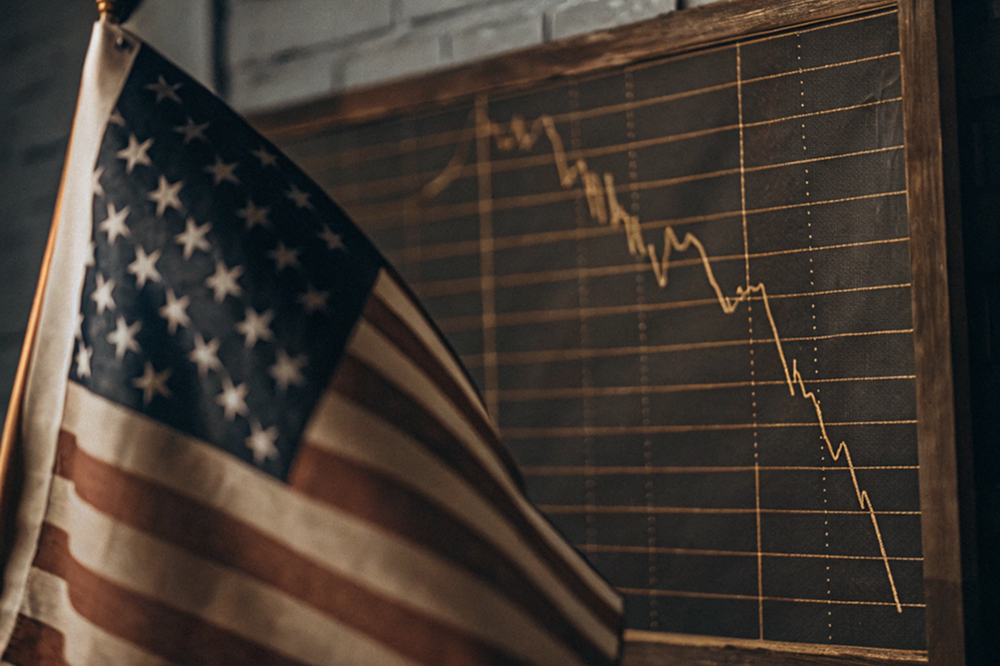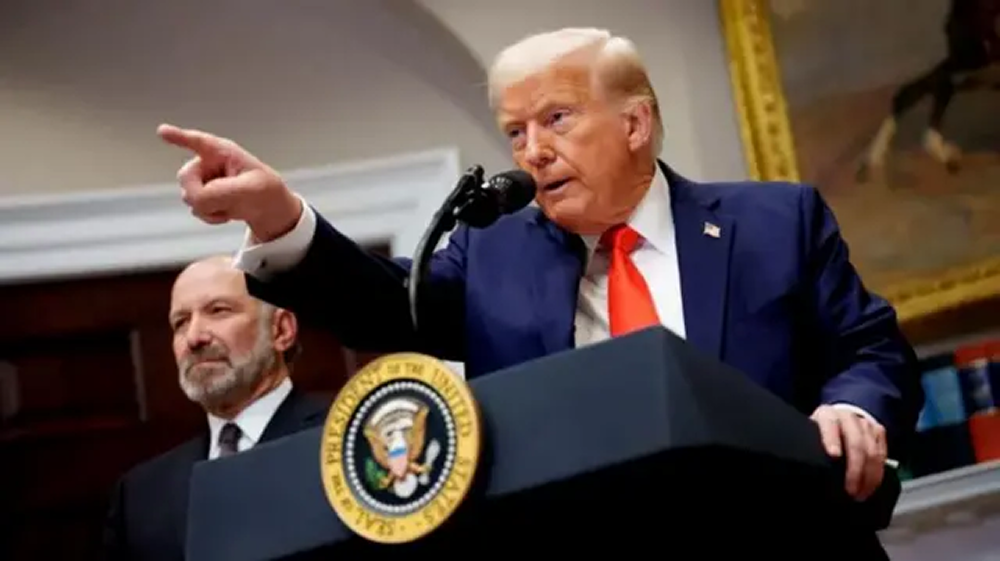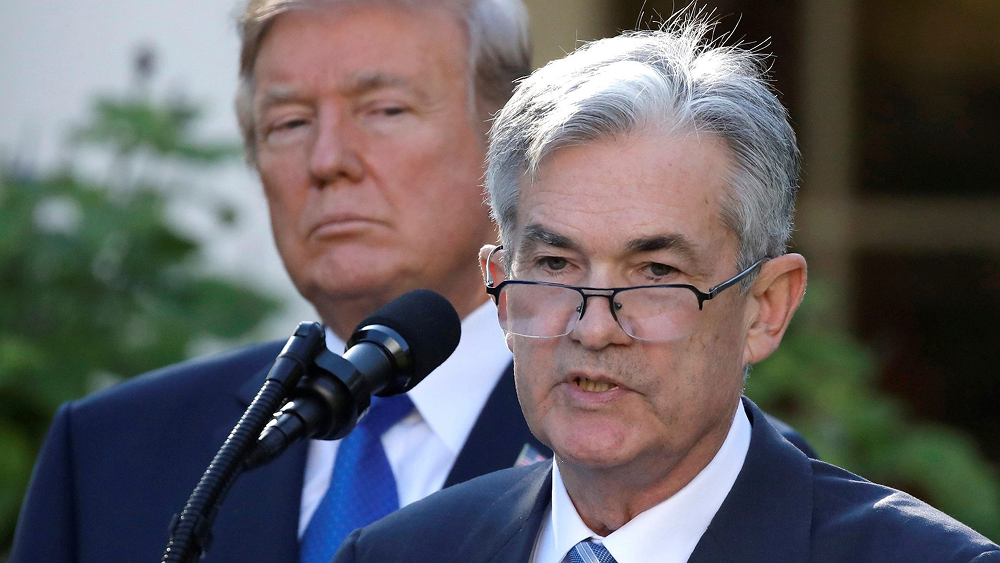Since Trump's return to the White House, the calm of the U.S. economy and global markets has been quickly disrupted. The U.S. stock and cryptocurrency markets have experienced significant corrections, shaking investor confidence, while the Atlanta Fed's GDPNow model predicts a dramatic drop in U.S. GDP growth rate to -2.82% in the first quarter of 2025, raising concerns about a "trading recession." Meanwhile, a bold viewpoint is circulating on Wall Street and among economic analysts: Trump may be deliberately creating an economic recession through policies such as tariff wars and cuts in government spending to force the Federal Reserve to lower interest rates, optimize the $37 trillion national debt burden, and reshape the U.S. economic landscape. This strategy intensifies downward pressure on the market in the short term, but if successful, it could lay the foundation for long-term growth. This article delves into the possibility and potential impact of this "conspiracy" based on the latest data and analysis.
Economic Data Flashing Red: Signs of Recession Emerging
At the beginning of 2025, U.S. economic data showed weakness, becoming the focus of market attention. The Atlanta Fed's GDPNow model indicated that the GDP growth rate forecast for the first quarter of 2025 plummeted from 2.32% on February 26 to -2.82% on March 3, a drop of 510 basis points in just five days. This is the worst result predicted by the model since the COVID-19 pandemic in 2020, suggesting that the economy may be heading into contraction. During the same period, the consumer confidence index fell to its lowest level since August 2021 (Bloomberg, March 9, 2025), and weekly unemployment claims increased by 20,000, marking one of the largest increases in recent years (ZeroHedge, March 5, 2025). The stock market also faced pressure, with the S&P 500 index dropping 3.1% last week and the Nasdaq falling 3.45%, marking the worst performance in six months (NPR, March 10, 2025).
These signals are not isolated events. A series of policies quickly rolled out after Trump took office—including tariffs on Canada, Mexico, and China, a layoff plan for the government efficiency department led by Elon Musk, and a freeze on federal spending—are seen as direct drivers of the economic slowdown. The Associated Press (March 9, 2025) noted that these measures "may harm the economy more than they repair it," while The New York Times (March 8, 2025) commented that economic forecasts have significantly worsened due to "federal layoffs, tariff measures, and uncertainties in immigration policy."

Trump's "Conspiracy": Recession Paving the Way for Rate Cuts
Larry McDonald, a veteran on Wall Street and former Lehman Brothers trader, made a shocking claim in a podcast on March 2: Trump is trying to create an economic recession to force the Federal Reserve to lower interest rates and alleviate government debt pressure. He pointed out, "You cannot suppress inflation through massive fiscal spending; the Trump team knows this well. They need a recession, and only then can they lower interest rates and extend the debt maturity. This is the only way to escape the $37 trillion debt predicament, aside from default." McDonald referred to this as a "financial repression" strategy, which involves lowering interest rates below the inflation rate to dilute the real cost of debt.
This viewpoint is not unfounded. Trump's recent policies align closely with this. The tariff war is seen as a key tool; he is not only pressuring Canada and Mexico to curb the influx of fentanyl but also plans to implement "reciprocal tariffs" on multiple countries starting April 2 (Forbes, March 9, 2025). While these tariffs aim to stimulate U.S. manufacturing, they could also raise prices and suppress consumption, further dragging down economic growth. Additionally, the DOGE plan, driven by Musk, has led to layoffs in government departments, raising concerns about the labor market. Time Magazine (March 9, 2025) reported that economists view Trump's policies as a "key risk," with Goldman Sachs even lowering its GDP growth forecast for the end of 2025 from 2.2% to 1.7%, predicting that tariffs will reduce the growth rate by 1 percentage point (Forbes, March 9, 2025).
Trump's attitude towards this is ambiguous. In an interview with Fox News on March 9, when asked if he expected a recession in 2025, he stated, "I hate to predict these things. We are in a transition period because we are doing big things to bring wealth back to America." While he did not deny the possibility of a recession, he emphasized long-term goals, suggesting that short-term pain is part of the plan (Bloomberg, March 10, 2025).

The Game of Debt Crisis: Trump's Struggle with the Federal Reserve
The tense relationship between Trump and the Federal Reserve has a long history, with the core of this struggle centered on interest rate policy. The U.S. national debt has reached $37 trillion, and if interest rates remain at current levels, interest expenses are expected to reach $1.2 trillion to $1.3 trillion by 2026, exceeding the defense budget (approximately $850 billion) and accounting for nearly a quarter of fiscal revenue (estimated at $5.1 trillion) (CBO, 2025 Budget Outlook). This means the U.S. must continue to "finance debt with debt," and a high-interest rate environment will increase the cost of U.S. debt, further depleting market liquidity.
Trump's demands are clear: immediate rate cuts to alleviate the debt burden and stimulate the economy. He publicly called for "rapidly lowering interest rates" at the Davos Forum on January 23 (Reuters, January 23, 2025) and threatened to audit the Federal Reserve or even optimize its personnel structure. However, Federal Reserve Chairman Jerome Powell stated after the January 30 meeting that the current economic situation is good and there is no need to rush to adjust policy (CNN Business, January 30, 2025). This divergence has pushed both sides to opposing positions.
McDonald estimates that if interest rates were to drop by 100 basis points, approximately $400 billion in interest expenses could be saved annually, while extending the debt maturity by issuing 10-year or 20-year bonds. This strategy requires a deterioration in economic data as a prerequisite, and Trump seems to be "inducing" this condition. X platform user @kingbull199 commented, "Trump is deliberately creating a recession to force the Federal Reserve to cut rates, then flooding the market with liquidity to boost assets, ultimately benefiting a select few, including the Trump family." Although this is a personal opinion, it reflects the market's heightened vigilance regarding Trump's motives.

The Long-Term Scheme of "Mild Recession": Structural Transformation of the Economy
Nomura Securities' analysis further provides theoretical support for this strategy. According to market commentary (such as ZeroHedge, March 5, 2025), the Trump administration may trigger a "mild recession" through cuts in government spending, employment, and increased tariffs to break the long-term dependence of the U.S. economy on government spending and promote the private sector as the main driver of growth. While this transformation may intensify economic downward pressure in the short term, it could reshape the growth model in the long term.
The New York Times (March 10, 2025) cited expert opinions stating that Trump believes tariffs will make U.S. products more competitive, although many economists warn that this could lead to a rebound in inflation rather than a revival of manufacturing. Commerce Secretary Howard Lutnick expressed optimism on NBC's "Meet the Press" (March 9, 2025), stating, "The U.S. will never fall into recession; Trump will bring growth." However, market reactions have been quite the opposite: declining Treasury yields, shrinking manufacturing activity, and small businesses planning layoffs indicate a lack of investor confidence (Yahoo Finance, March 10, 2025).
Market and Global Impact: Short-Term Risks and Long-Term Opportunities
In the short term, Trump's policies have already triggered market turmoil. Uncertainty over tariffs has led businesses to postpone investments, and consumers are reducing spending due to expectations of rising prices. Bloomberg (March 10, 2025) pointed out that the trade war could impact global supply chains, exacerbating economic pressure on allies. The Guardian (March 10, 2025) warned that if the recession persists, it could trigger a global economic chain reaction.
However, if Trump successfully forces the Federal Reserve to cut rates, the market may see a turning point. Historical experience shows that low interest rates often stimulate rebounds in the stock and cryptocurrency markets.
Conclusion: Danger and Opportunity Coexist
It remains uncertain whether Trump is deliberately creating an economic recession, but his policies have undoubtedly intensified the risks of economic downturn in the short term. From tariffs to layoffs, and the public confrontation with the Federal Reserve, his strategy seems to point to a clear goal: to exchange short-term pain during a "transition period" for lower interest rates and debt optimization. This high-risk gamble may continue to pressure the U.S. stock and cryptocurrency markets, but if the Federal Reserve compromises, large-scale rate cuts could usher in a new round of prosperity.
免责声明:本文章仅代表作者个人观点,不代表本平台的立场和观点。本文章仅供信息分享,不构成对任何人的任何投资建议。用户与作者之间的任何争议,与本平台无关。如网页中刊载的文章或图片涉及侵权,请提供相关的权利证明和身份证明发送邮件到support@aicoin.com,本平台相关工作人员将会进行核查。




